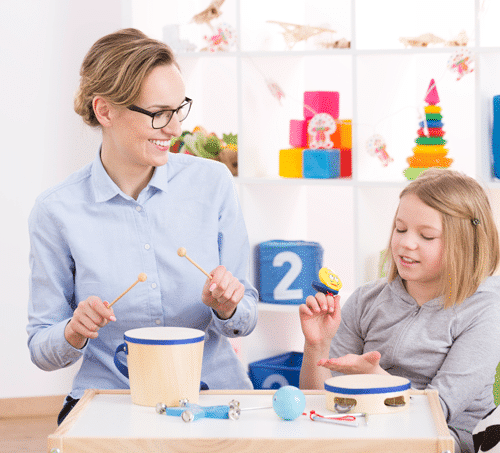Latest Research: How Rhythmic Skills Relate and Develop in School-Age Children

By: Silvia Bonacina, Jennifer Krizman, Travis White-Schwoch, Trent Nicol, and Nina Kraus
Published in GLOBAL PEDIATRIC HEALTH
RESULTS:
Simply drumming to a isochronous beat had no impact on recall of rhythmic patterns. Children who performed better at drumming to the beat of music were better at both drumming to a beat and remembering rhythmic patterns. However, children who were able to clap in time with a steady beat with the least amount of variability in their synchronization (due to real time millisecond feedback from Interactive Metronome) demonstrated better ability to drum to a beat, recall rhythmic patterns & drum to the beat of music. According to Dr Nina Kraus, rhythm is complicated, there are several rhythm intelligences, & Interactive Metronome, by itself, impacts all of these vital rhythms that are so important to the development of language and literacy. “Several clinical populations exhibit timing deficits that co-occur with to language deficits; for example, individuals with reading impairment often struggle to tap along to an isochronous beat. It is conceivable that clapping in time to feedback could be a viable intervention for populations with distinct rhythmic deficits (such as one group who struggles to synchronize to a beat and another who struggles to remember rhythmic patterns).” The authors hypothesize that the perception & production of rhythm begins as a global skill early and becomes more specialized later in life. This is in line with previous IM research and the IM Indicator Table data.
DETAILS:
- n=68 typically developing children between 5 – 8 years of age
- n=46 children were re-assessed 1 year after conclusion of the study to monitor development of rhythmic skills
- first study of its kind to provide evidence of the interconnections among rhythmic skills in school-age children
- assessed via 4 different rhythmic tasks:
- 3 tasks used a conga drum, with a trigger to register drum hits:
- Drumming to an Isochronous Beat: listen and drum to an isochronous pacing beat presented through in-ear headphones
- Remembering and Repeating Rhythmic Patterns: listen to 3 repetitions of a rhythmic sequence without drumming and then drum out the sequence during a pause, producing the sequence exactly when it would have occurred had it repeated a fourth time
- Drumming to the Beat of Music: listen to a musical excerpt through speakers and tap to the perceived beat
- 1 task involved clapping in time and was completed using Interactive Metronome (IM)
- 3 tasks used a conga drum, with a trigger to register drum hits:
